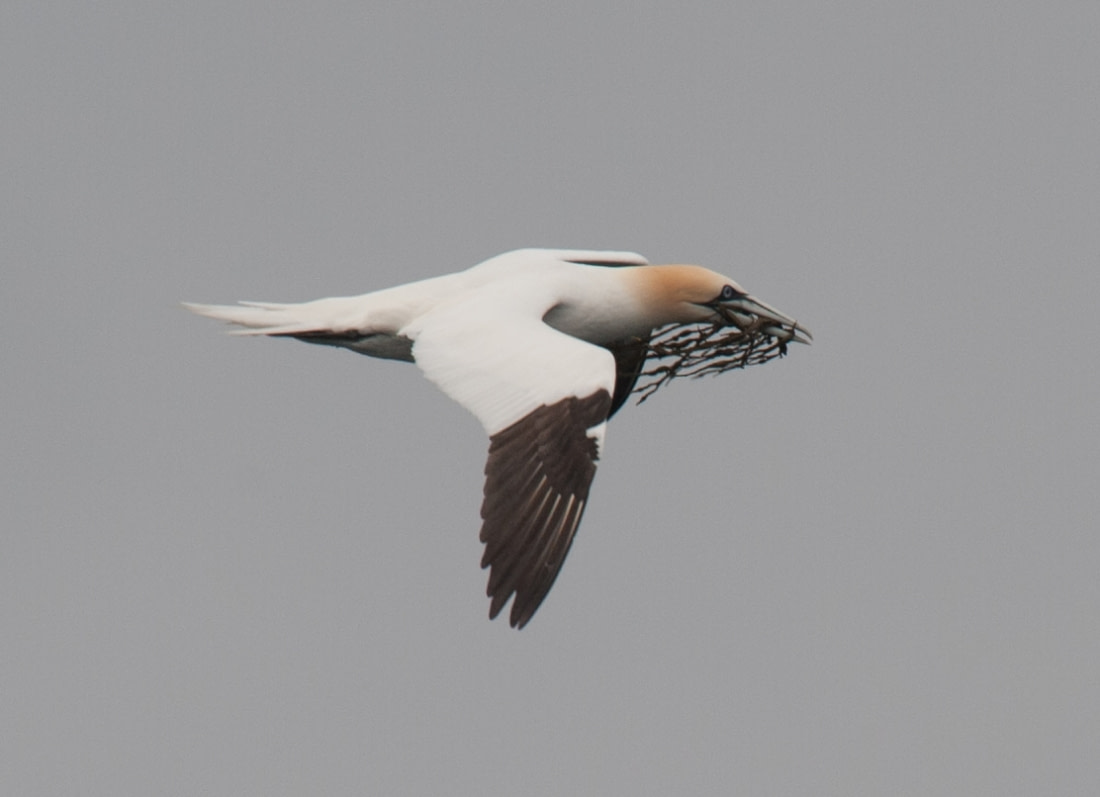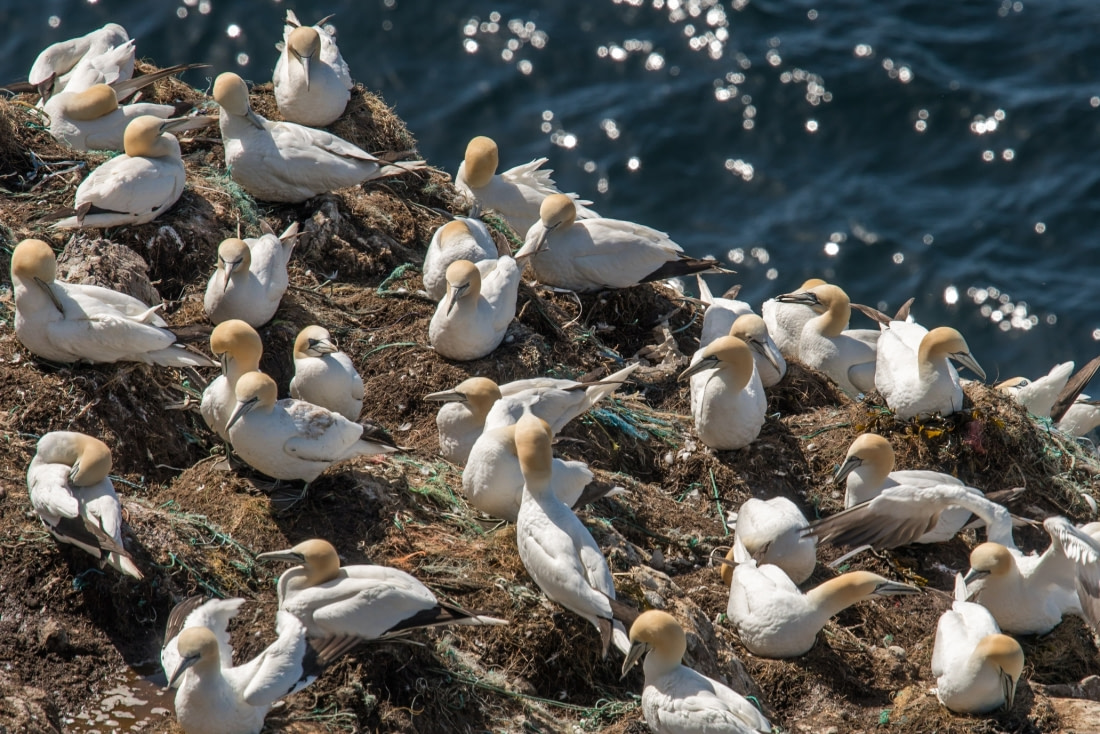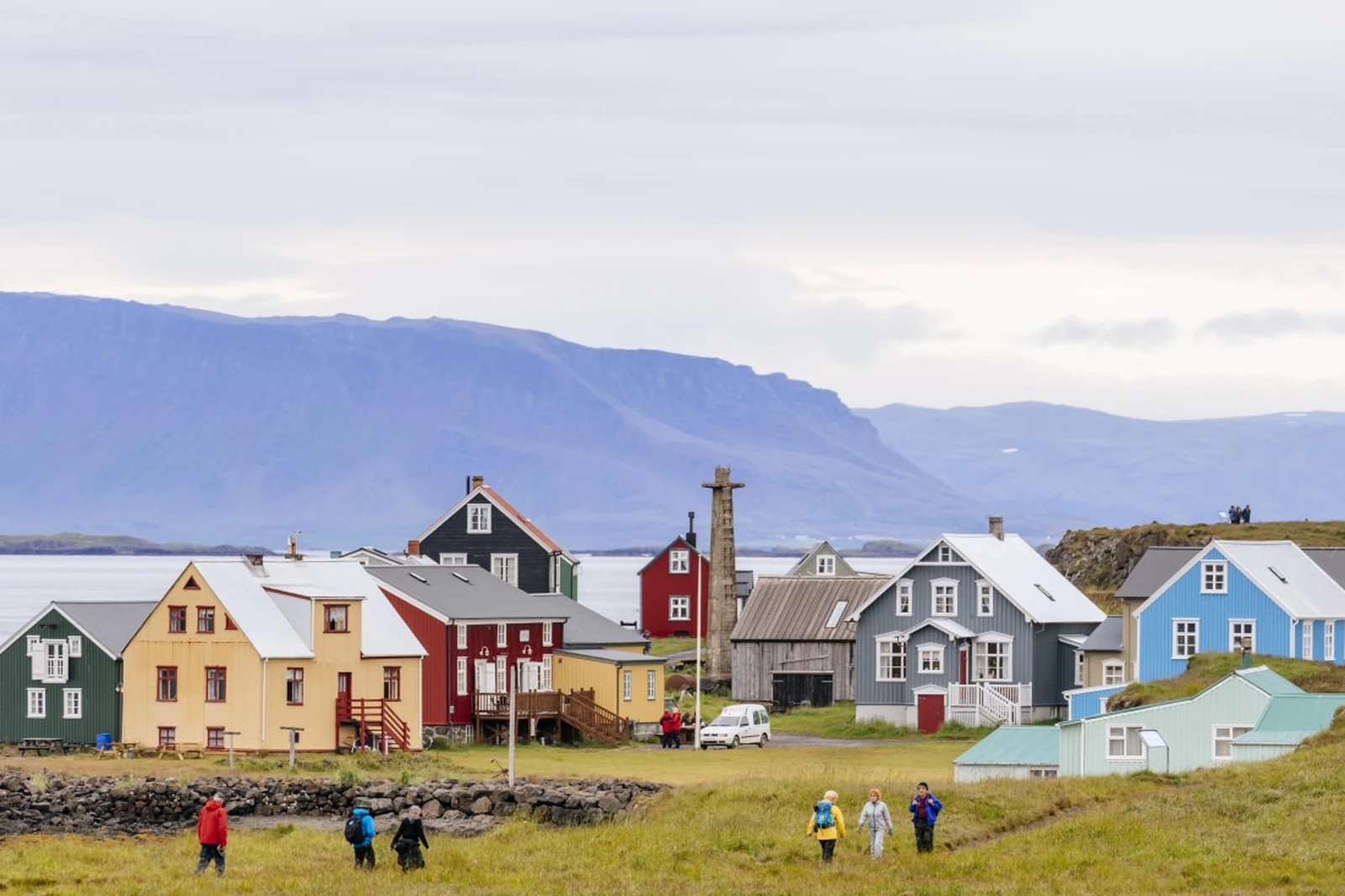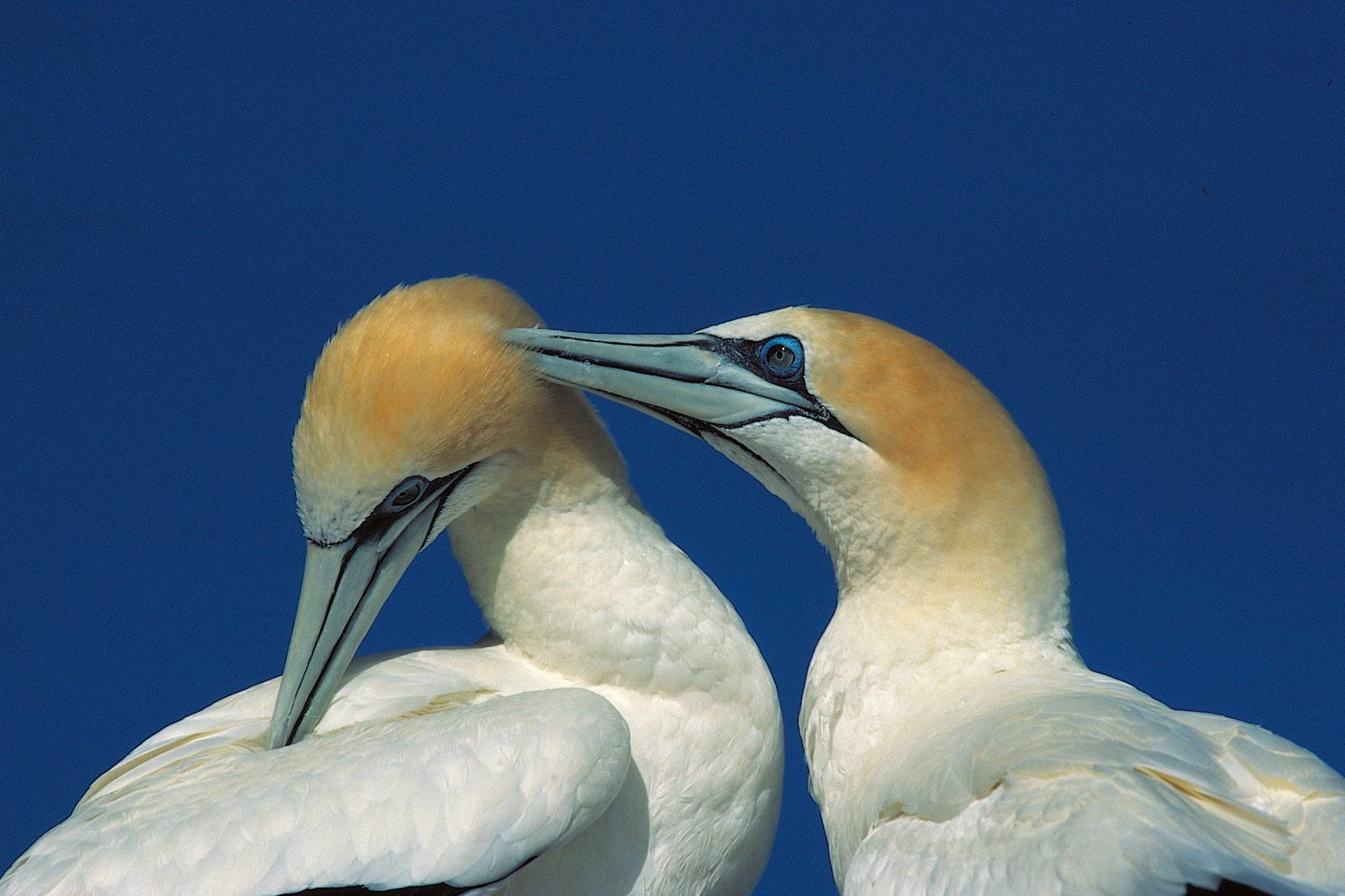Name: Northern Gannet, Solan, Solan Goose (Sula bassana)
Length: 80 to 110 centimetres.
Weight: 2 to 3.5 kg.
Location: Eastern coast of North America to Gulf of Mexico, across the Northern Arctic to Europe, and down to northern Africa.
Conservation status: Least Concern.
Diet: Fish, squid.
Appearance: White with brown or black wingtips, black patch around blue eyes, long blue-grey beaks with a slight downward curve.
How do Northern Gannets feed?
Northern Gannets dive at speeds up to 100 km/h, using their strong sternum to withstand impact. They spot prey from as high as 45 km above sea level, though 10 to 20 metres is more common. They use their wings as rudders during the dive, tucking them in just before hitting the water. They can dive 5 metres below the surface and swim an additional 15 metres to catch prey, swallowing fish underwater. They also follow fishing vessels to pick fish from nets or refuse.
Are Northern Gannets social?
Northern Gannets forage together.
How fast do Northern Gannets fly?
Northern Gannets can fly up to 65 km/h.

What are Northern Gannet birthing rituals like?
Northern Gannets return to the same breeding sites for hundreds of years, with colonies containing tens of thousands of nests. Older birds return first, with breeding seasons varying by location. They reach sexual maturity around four years of age. Juveniles may nest at the fringes or take over other nests but will yield to older birds. Males build nests from seaweed and other materials, requiring maintenance throughout the season. Same-sex fights can occur, especially among males.
Females search for mates, with males displaying by shaking their heads. Once mated, they usually remain monogamous. One egg is laid, weighing about 100 grams, with a 6-7 week incubation period. Hatchlings are fed regurgitated food for 3 months. Adults may fly up to 320 km to find food for their young. After 3 months, chicks glide to the water and are on their own, surviving on fat reserves for 2-3 weeks. Juveniles take about three years to develop fully white plumage.
How long do Northern Gannets live?
Northern Gannets live about 35 years in the wild.
How many Northern Gannets are there today?
Estimates suggest a population of 950,000 to 1,200,000 individuals.
Do Northern Gannets have any natural predators?
Adults are occasionally preyed upon by bald eagles, white-tailed eagles, large sharks, and seals. Chicks and eggs are vulnerable to gulls, ravens, ermines, and red foxes.

7 Grand Northern Gannet Facts
1. The Northern Gannet is the largest member of the gannet family.
2. They secrete a water-impermeable oily fluid from sebaceous glands, spreading it across their feathers.
3. They are not good walkers and prefer taking off from water, facing into the wind and flapping vigorously.
4. They have tiny airbags under their skin to help them resurface after a dive.
5. Females are choosier hunters, diving deeper and longer.
6. Their migrations can reach as far south as Ecuador.
7. In the U.K., "gannet" is synonymous with "glutton" due to their huge appetite.











 8 Days / 7 Nights
8 Days / 7 Nights
